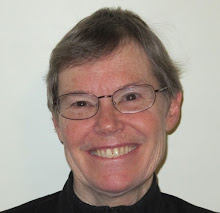Here are two portraits of Mary:
 |
| Mary Vial at 15 years old (painted 1753) |
 |
| Mary Vial Holyoke at 33 (painted 1771) |
By the time of the 1771 portrait, Mary was the mother of 8 year old Margaret ("Peggy"), her second child. Her first child had died before the age of four. Five other babies had arrived, but each died in infancy. This must have been a very difficult period for Dr. Holyoke and his wife.
Mary was pregnant again in 1771, giving birth that September to Elizabeth ("Betsy"), who would live until 1789. In all, Mary birthed twelve babies! I am descended from the 11th one, Susanna, born April 1779. Mary lived to age 64 in 1802, with three daughters surviving her and living on for decades.
Dr. Holyoke lived "one hundred years and eight months, lacking one day" – according to the introduction to the Holyoke Diaries [published by the Essex Institute, 1911]. He was a well-known doctor in Salem, "very attentive to his medical practice." "His charge books show an average of eleven professional visits a day for a period of seventy-five years."
On this November 22, I am thinking of the wedding anniversary of Dr. Holyoke and Mary Vial, and the family connections, leading eventually to my family in Danvers.
Their daughter Susanna, my great-great-great-grandmother, lived a long full life, into her 80th year. Susanna's daughter Mary, born in 1800, lived to 1880. The next generation included Mary's son Andrew Nichols, who was born in 1837, built the Pine Knoll cottage in Danvers in 1861, and lived there until his death in 1921. His youngest son, William, born 1872, became my grandfather and in the 1940's and 1950's lived right next door to us, so I remember him very well. I didn't at that time care about history or pay much attention to family stories about ancestors. Now, in my older years, I'm looking at the connections back through the years.







